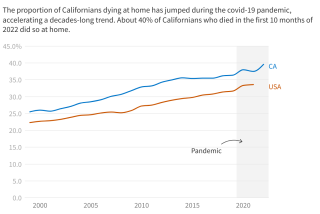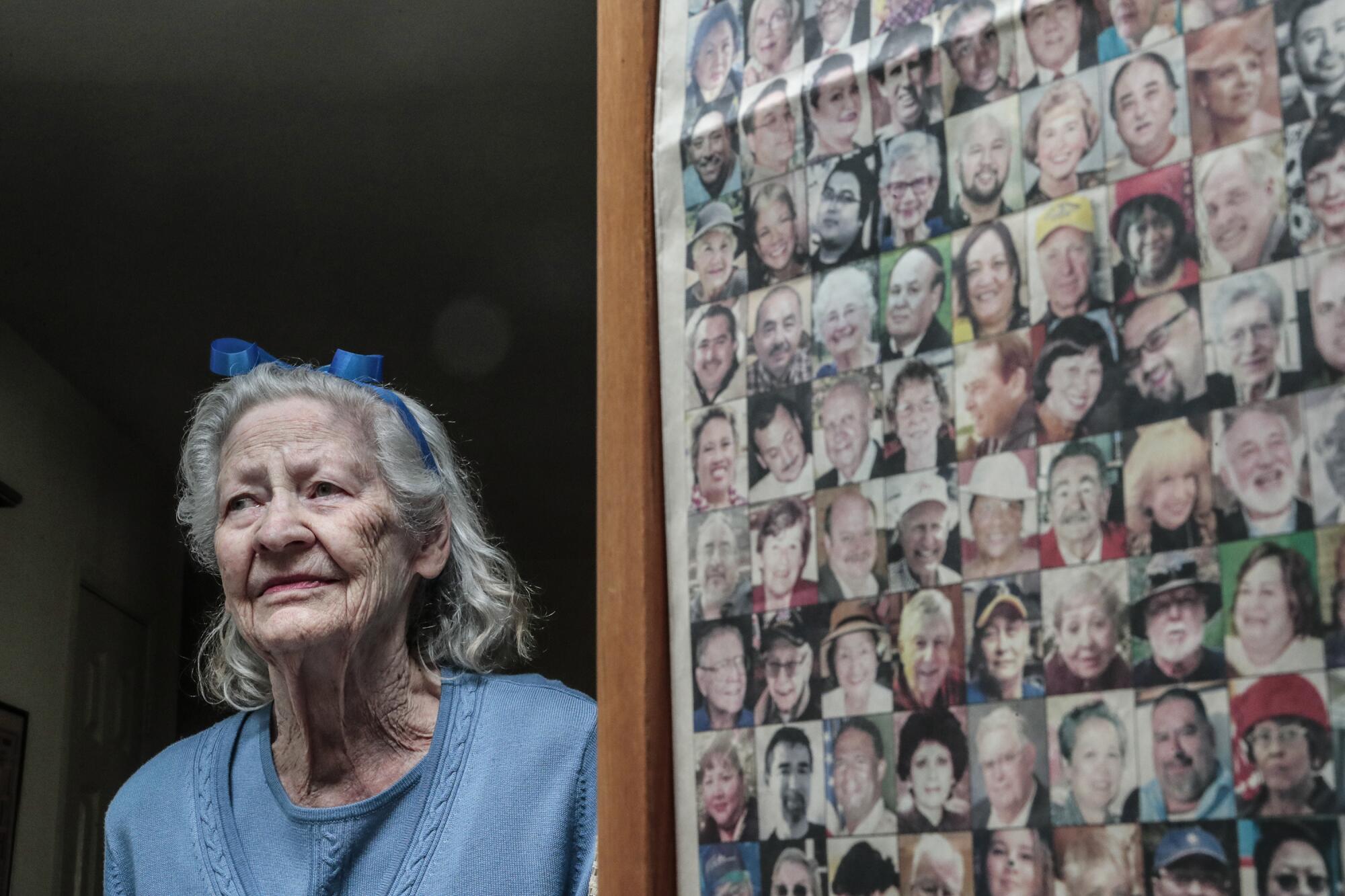
Each day Lois Jones walks past 119 strangers who died last year of COVID-19. Their photos cover the front page of a newspaper that has been Scotch-taped to the glass door of a curio cabinet in her entry hall. Its shelves lined with miniature ceramic pianos, the piece of furniture holds a place of honor in her home.
A wave of sadness flows through her with each encounter, which takes place whenever she goes from her bedroom to her kitchen, to her living room or piano studio, and as uncomfortable as the feeling is, she does not avoid it.
âIt is my way of showing respect to the people who lost their lives,â she said, ârespect for the fact that they had families whom they didnât get to see after they became ill with this awful virus.â
At 88, the retired piano teacher shares her Monterey Park home with her 70-year-old daughter, Nena Cummings, and has not stepped outside in more than a year. She is determined to live long enough âto hear Dr. Fauci declare the pandemic over.â
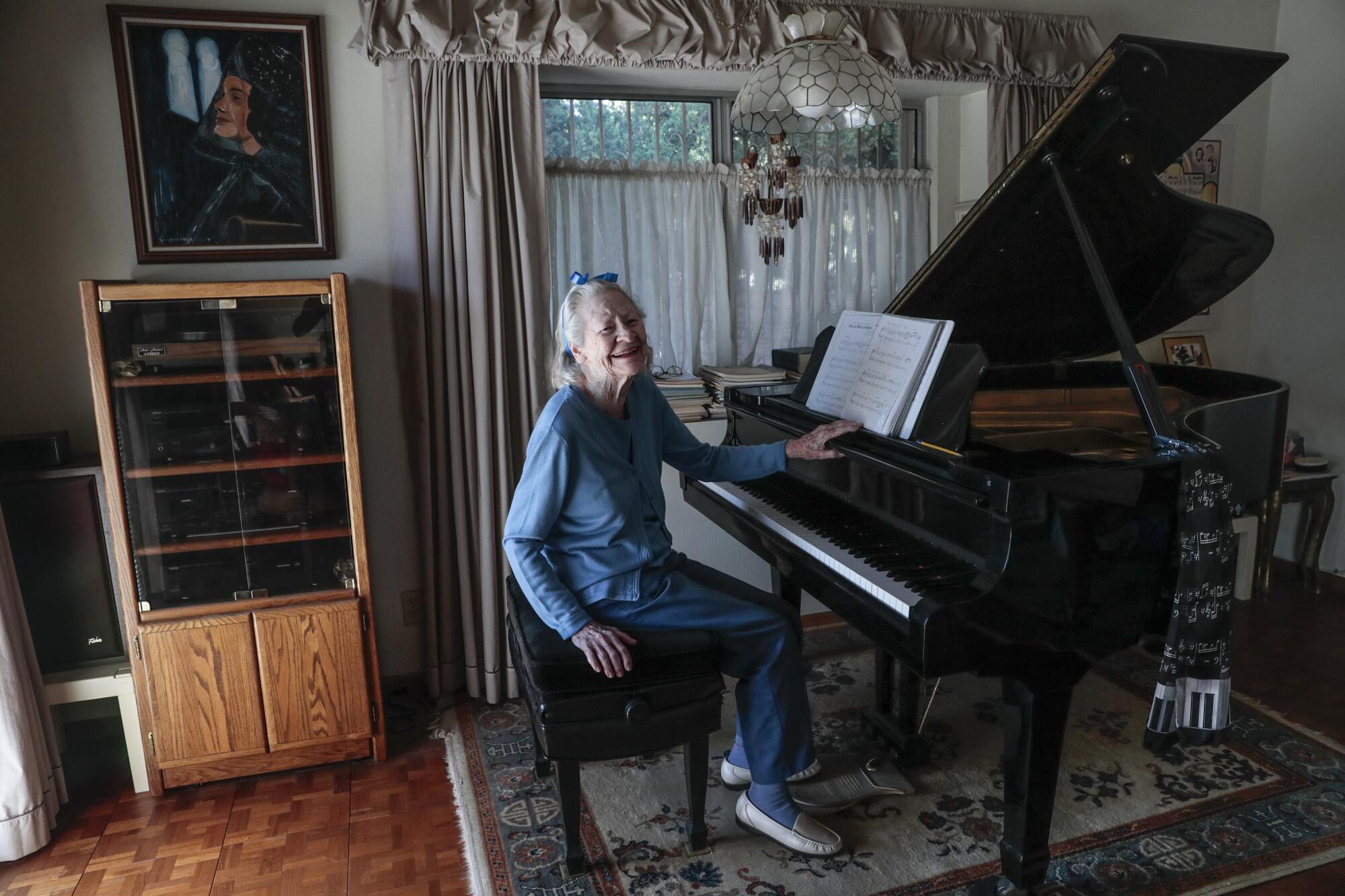
The newspaper section covering her cabinet was published by The Times last July when the human cost of the pandemic in California was slowly coming into focus. At the time, 9,000 people had died. Today more than 61,000 have died, and with nearly 60 new deaths being recorded each day, the pandemic still has a grip on the state.
Death on this scale makes survivors of us all, struggling through the haze of emotion to understand how grievous these losses are, especially having surprised us so. Sudden death leaves an emptiness like no other.
Editors, writers and interns attempted to keep pace, rendering these lives through short obituaries that were printed weekly at first, and now every other Monday. They can also be read online.
Move through the site â âThe Pandemicâs Toll: Lives Lost in Californiaâ â and a name, a photo and story come to light, then fade as the next one appears. The procession is solemn, a funeral cortege in words, all the more poignant for the absence of public remembrances.
That common refrain â no gathering is planned at this time, memorial services are pending, a memorial will be held at a later date, due to COVID-19 the family will be scheduling a memorial at a later date â adds to the loss, and what is celebrated then may never be enough for what is felt today.
A few more than 300 have been written, and this fraction alone is overwhelming. Yet Jones has looked at that front page enough times to consider those men and women almost as friends.
âI feel some sort of bond with them,â she said. âI donât know why. I cannot explain it.â
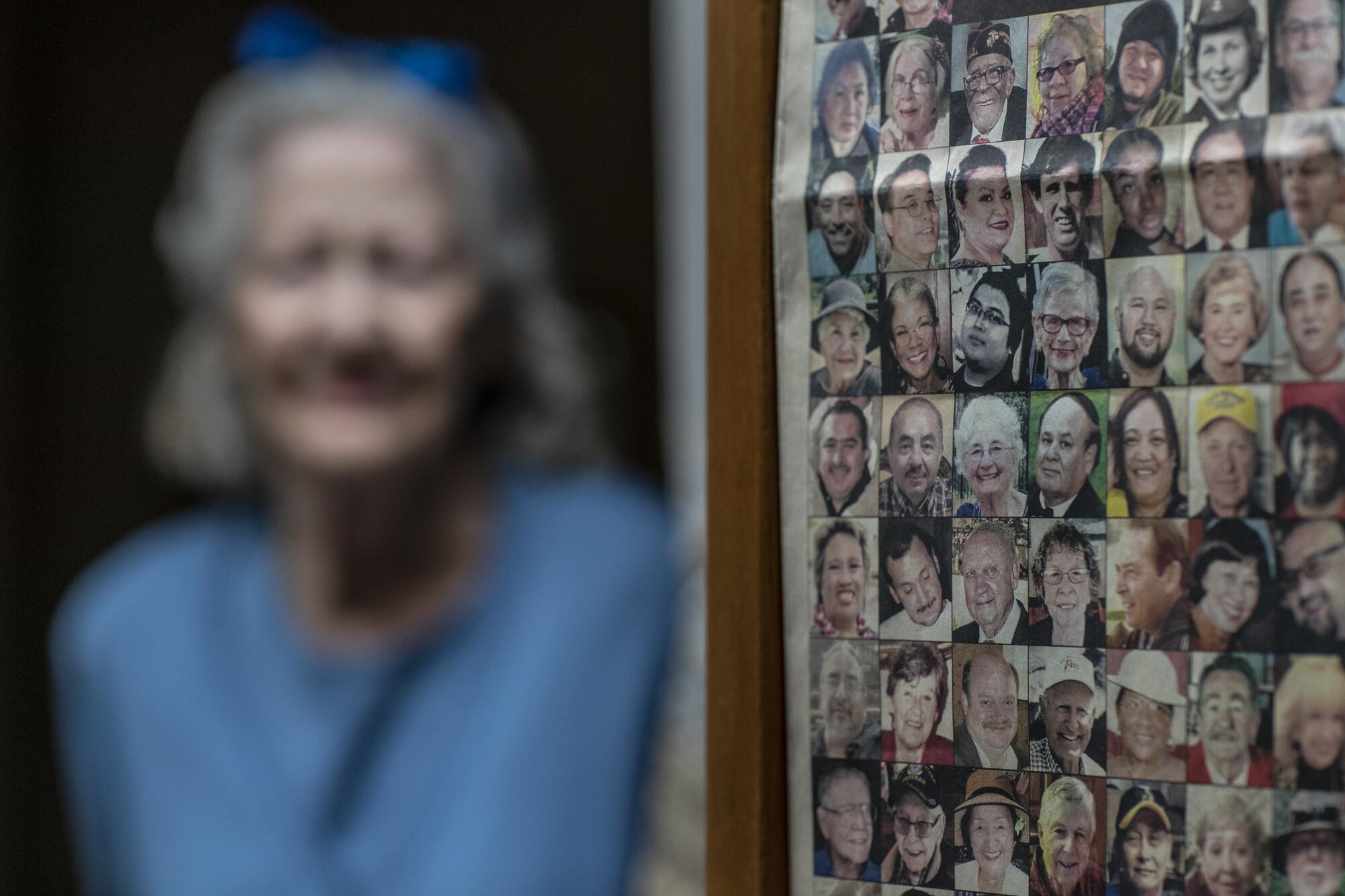
The images on the page are small, and most everyone is smiling, that quick reflex whenever facing a camera. Happiness can sometimes be that simple and fleeting.
She picks out Betty Gentry in a service cap and dress blues from her time in the Navy. Gentry and her husband adopted a child from an orphanage while stationed in Japan and a second child when they were redeployed to Chula Vista.
One row below is James Lanier Craig with his broad white moustache, who âwould never make you feel bad about yourself,â if his daughter is to be believed.
âI wish more people were like that,â said Jones.
Lower still and on the far right is Patti Breed-Rabitoy, whose pixie cut is an easy giveaway. She left work early one day to surprise her children with an unexpected trip to Magic Mountain. Nothing so ordinary ever seemed so special.
These three names, these three brief stories, are as important as any of the other 300 or 61,000.
In a state with nearly 40 million people, most who died are strangers to us: neighbors from one street over, the family in the car next to ours, those whom we wish we had met if only our paths had crossed.
âThatâs why they are hanging on the curio,â said Jones, where their paths do meet.
But for us these posthumous lives in print or on the website are our meeting ground, a place where we join loved ones and listen and try to bridge the distance between grief and consolation.
Staff writer Hayley Smith wrote about the project at its start: âTo scroll through the stories is to experience a cross section of the state.â At the time, Smith was one of six journalism student-interns from USC, which partnered with The Times on âLives Lost.â
Many of the dead came from afar â El Salvador, Vietnam, the Bronx, Mexicali, Quebec, Missouri, Korea, Ohio â and we imagine their farewells and dreams of a future unburdened by the past.
Some struggled â drugs, alcohol, mental illness, cancer, the loss of a child, a spouse, homelessness â and in those struggles, we feel their loneliness, frustration, the blurring of hope by hardship.
They found jobs and professions â a cook, a forklift driver, caregiver, school bus driver, teacher, newspaper pressman, animator â and in their work, we see them navigate daily life, the anticipation of a paycheck, the commute, a kind or unforgiving boss.
And they all seemed to hold onto their passions â Turkish coffee sweetened with milk and only a little sugar, chess sets, the grandchildren, karaoke, the California coastline, vanilla ice cream, Filipino pop music, the Backstreet Boys, the Philadelphia 76ers, mariachis at the Hollywood Bowl, vintage tequila, sunflowers â and here we most easily meet them.
As eccentric or familiar as their tastes might have been, we catch their laughter and see something of ourselves.
Jones gives in to her tears. A box of tissues and her striped tabby, Mister Mikey PurrPence, are nearby.
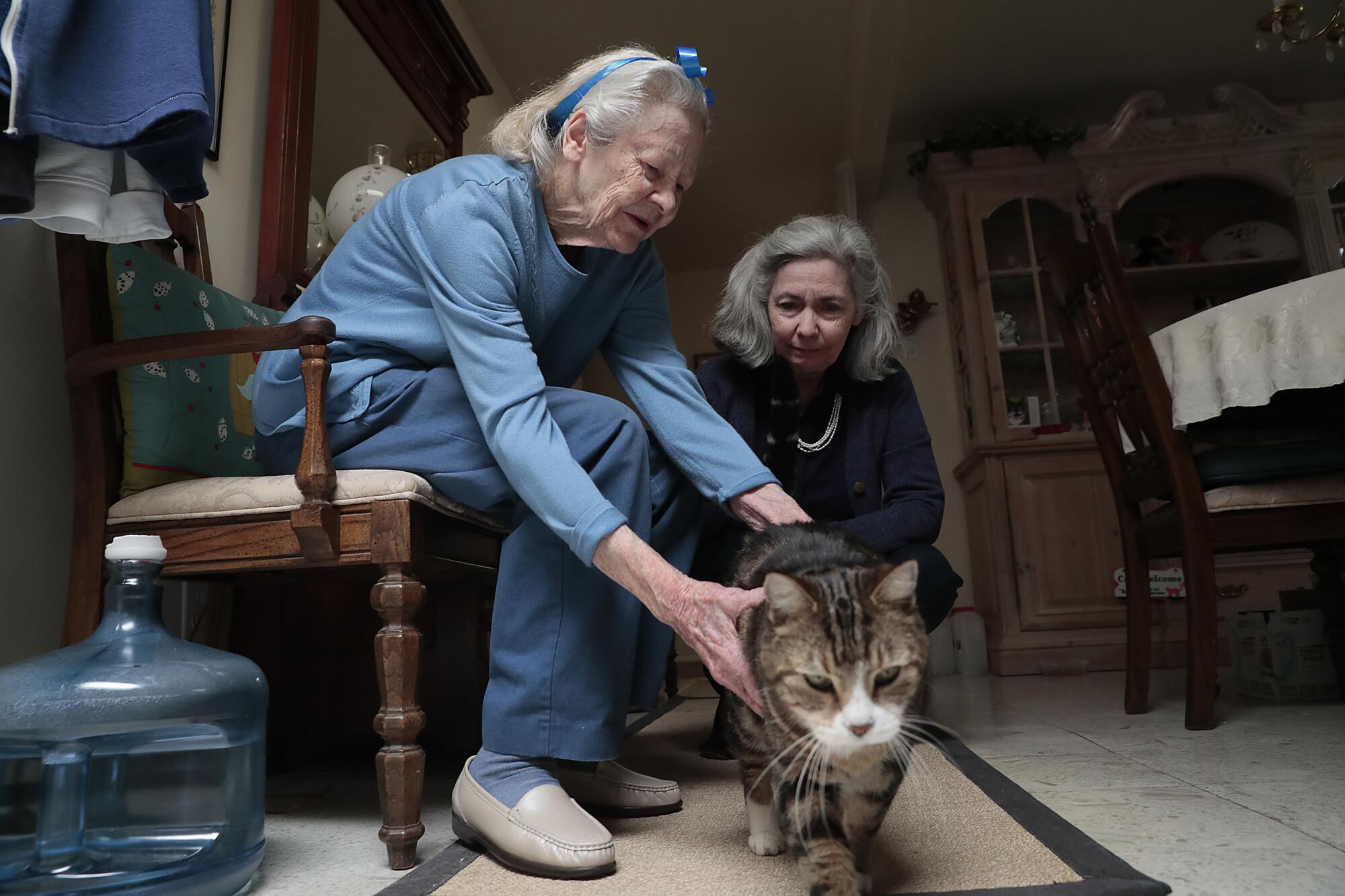
So much goes unsaid in the midst of grieving, and so little is spoken of lives lived without notoriety, scandal or controversy.
Decency is rarely part of the news cycle, and these were mostly good lives of modest accomplishment belonging to men and women content to be unrecognized for the sacrifices, work, love and devotion that they shared with a few.
âIt is a reminder that ordinary people are extraordinary,â said Mitchell Landsberg, an editor on the project. âThere is no such thing as an ordinary person.â
They would probably be embarrassed by the attention, private lives made public: bicycles lent to children, donations to charities, hours spent volunteering at church. What they did for others is what others did for them; it was often that simple.
âThis is whom we lost,â said Steve Marble, an editor who worked with Landsberg. âThis is the definition of those you want to see the world filled up with.â
And if sorrow turns to anger â and there are reasons to be angry: the reluctant politicians, the skeptics and deniers, circling ambulances, crowded ICUs, personal protective equipment and ventilator shortages â then anger at this moment may be a mask for feelings more difficult to express.
Harder is to maintain these memories, to walk by them each day as Jones does, and acknowledge that this is how we lived and how we died during this extraordinary time.
Through each life, we understand the breadth of our own life, our ambitions, what gives us pleasure and happiness, what obstacles we can overcome and how we might be remembered one day.
Passing through her entry hall, Jones glances at the 119. The pictures are like headstones in a national cemetery, markers tracing the contour of the land. The thought accompanies her into the piano studio.
Many years ago her husband, now deceased, built this room for her, which was an extension into a portion of the front yard, happily diminishing the amount of lawn he had to mow.
Jones sits down at the six-foot black grand that once was displayed in the front window of the piano store they owned together.
She turns to Scarlattiâs Sonata in E major. The melody, written more than three centuries ago, slowly comes to life, bringing with it the promise once again of joy and beauty returning to our lives.
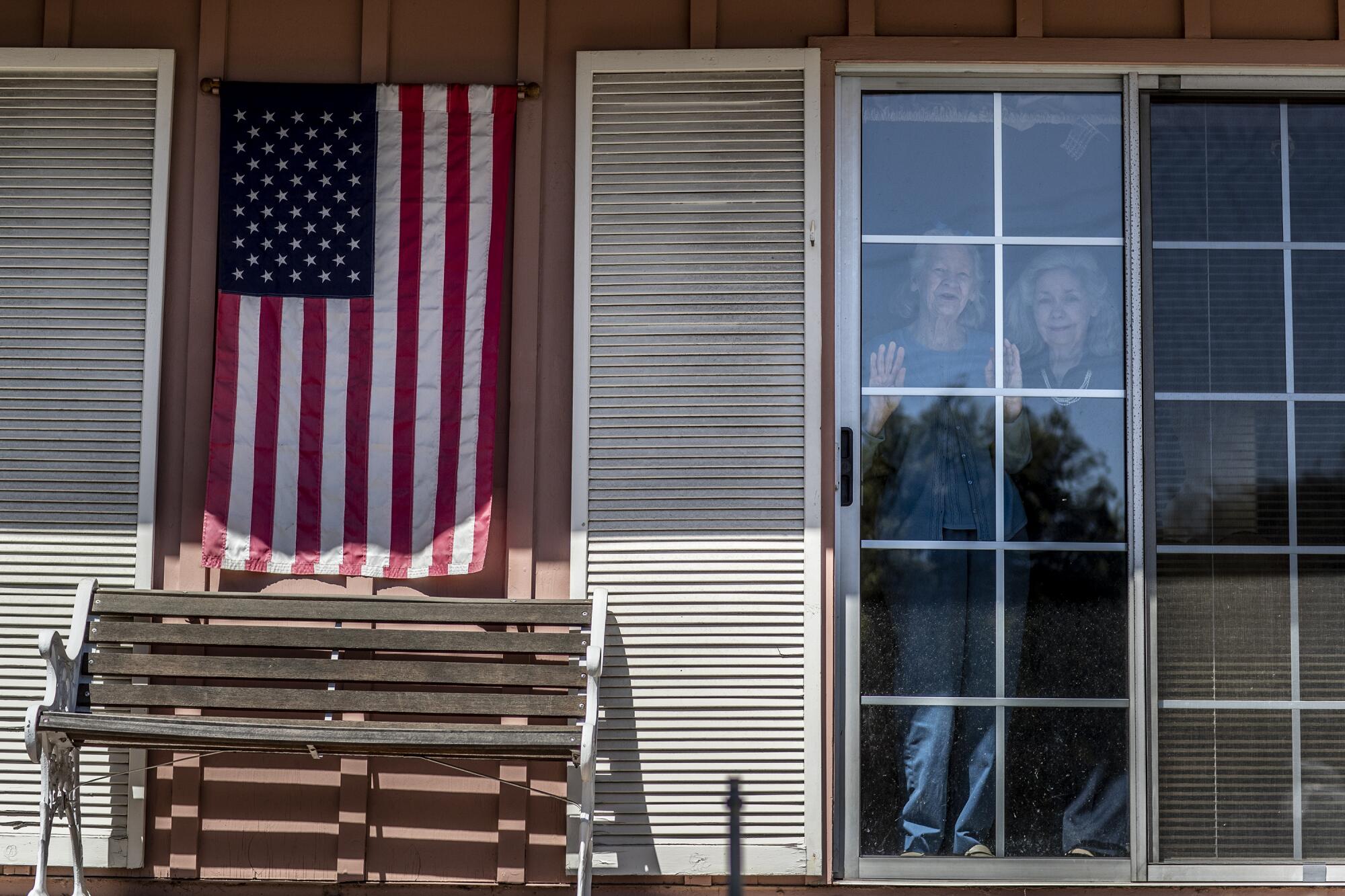
Editorâs note: As the death toll surged in the first days of the coronavirus outbreak last spring, Times staff writers across the newsroom and a team of interns here through partnerships with the Pulitzer Center and USC began telling the stories of some of the more than 61,000 Californians who had perished. Now, as the death count falls and restrictions on how we live our daily lives are eased, âThe Pandemicâs Toll: Lives Lost in Californiaâ project soon will draw to a close.
More to Read
Sign up for Essential California
The most important California stories and recommendations in your inbox every morning.
You may occasionally receive promotional content from the Los Angeles Times.


